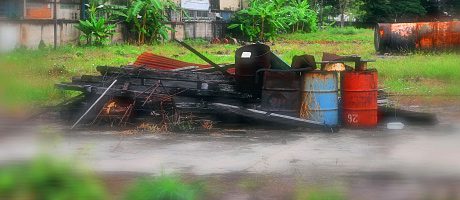
A specialist group has welcomed the UK Government’s stance on brownfield development but has voiced concerns over the risk of increased legal challenges to local authority decisions.
The Contaminated Land Network of the Chartered Institution of Water and Environmental Management backed the Government’s strategy but only after it highlighted issues with the originally proposed draft policy and commented on cuts to public funding streams which it said carried the potential for increased human health risks and pollution of the environment.
The National Planning Policy Framework was introduced by the Department for Communities and Local Government (DCLG) in March and is considered by CIWEM to be a considerable improvement on the earlier draft.
The updated document, it said, “explicitly acknowledges” that building on brownfield land should be a priority and that “planning policies and decisions should encourage the effective use of land by re-using land that has been previously developed”.
‘decisions should encourage use of previously developed land’
The NPPF further reinforces that development principles should be sustainable and that a site investigation should be undertaken by a competent person to include an appropriate assessment of risk and “after remediation, as a minimum, land should not be capable of being determined as contaminated land under Part 2A of the Environmental Protection Act (EPA) 1990”.
However, CIWEM added that the revocation of the planning policy statement relating to land contamination is a considerable loss that could lead to inconsistencies in the assessment of land and potentially increased legal challenges to local authority decisions.
Revised Statutory Guidance on Part 2A EPA 1990 was introduced by DEFRA in April and includes a number of considerable changes to the regime and those have been welcomed by CIWEM. They include the introduction of a ‘significance test’ on pollution of controlled waters, four site categories relating to both human health and controlled waters to aid the local authority decision-making process for determination of sites and the requirement for a sustainability assessment.
CIWEM believes the improvements to the previously unwieldy and unclear guidance could kick start the largely stalled regime.
Danny Hope, a member of CIWEM’s Contaminated Land Network, said: “We believe that the Government could still do more to safeguard human health and the environment whilst promoting regeneration of brownfield sites and would like to see further guidance come from central government.
“This could include support for development of a skills and competency framework and research leading to development of further generic assessment criteria for assessing soils and groundwater.”






